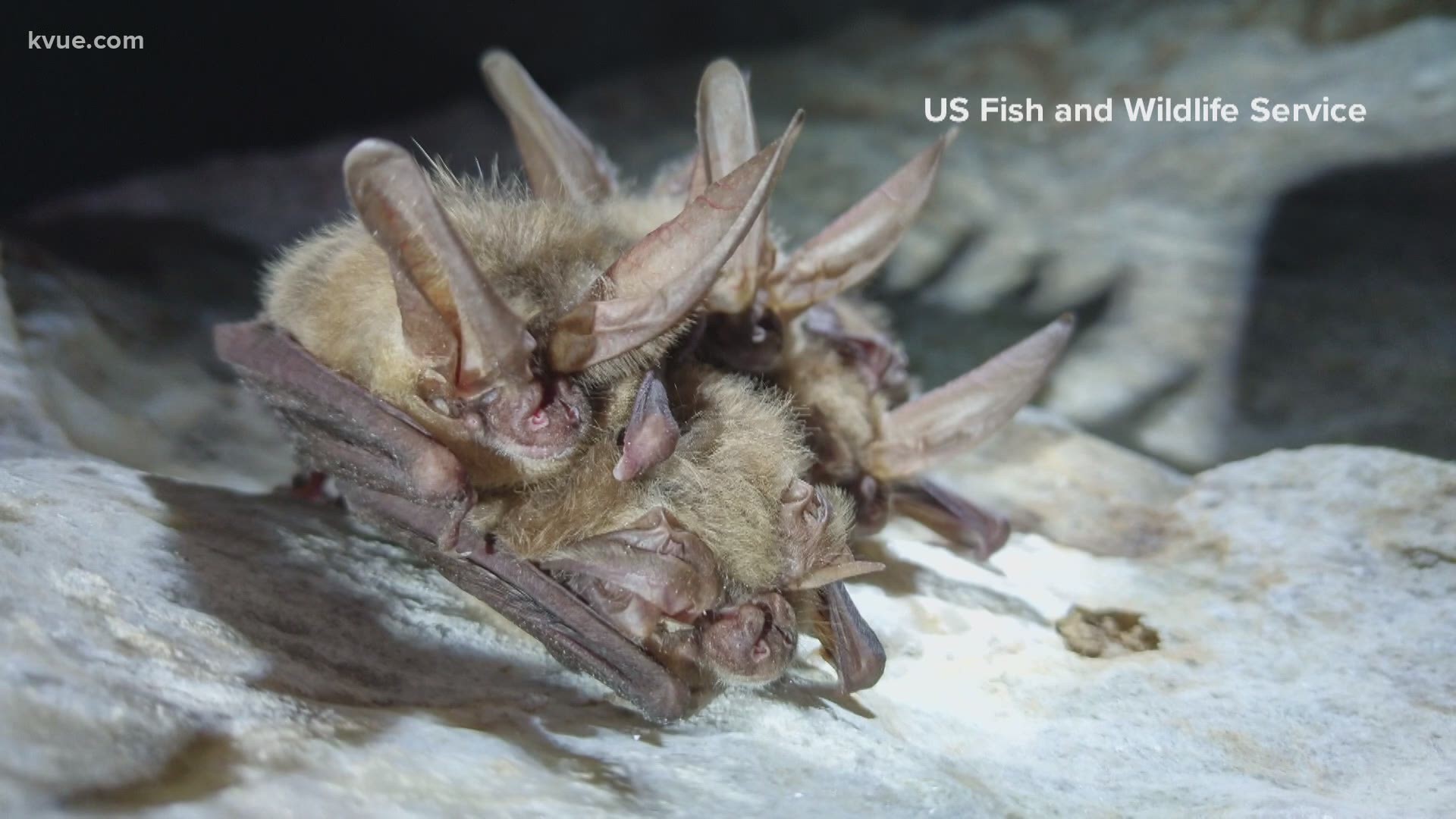AUSTIN, Texas — The Texas Parks and Wildlife Department (TPWD) is asking for the public's help as it researches a deadly disease impacting the Austin area bat community.
Last winter alone, white-nose syndrome (WNS) was detected in 18 Central Texas counties, and it continues to spread. Now, TPWD is asking for the public's help in reporting bat deaths in hopes it can help them understand how the illness is affecting vulnerable bat populations.
“Last year, we received reports of bats dying or acting strange from around the state,” said Nathan Fuller, a TPWD bat biologist. “Unfortunately, we expect the same thing to happen this winter and we are asking Texans to be on the lookout for distressed bats. Texas is a big state and we can monitor bats much more effectively with more eyes out there looking for bats.”
The disease is caused by a fungus that impacts hibernating bats in the winter months. WNS causes a white, fungal growth on the ears, nose and wings of the animals as they hibernate. Researchers believe that the fungus, Pseudogymnoascus destructans, was inadvertently brought to North America from Europe sometime in the mid-2000s.
Fuller said the disease is particularly dangerous for the flying mammals because during the winter, after bats have been hibernating for a few months, those with WNS will start to run out of fat in January or February.
"Once this happens, bats often leave their roosts in search of food or as an attempt to escape the disease and unfortunately, the animals usually don’t survive,” said Fuller. "However, if we know where bats are in the most trouble, we can enact measures to protect the survivors and give them a chance to recover."
You can send reports of dead bats to wns@tpwd.texas.gov. Individuals sending reports are asked to include a general location of where the animal was found and a photograph, if possible. People should not handle live bats or bat carcasses with their bare hands.
PEOPLE ARE ALSO READING:

